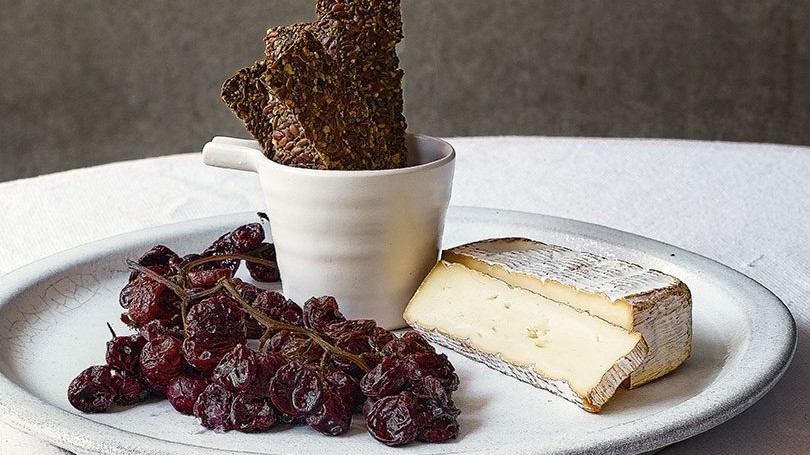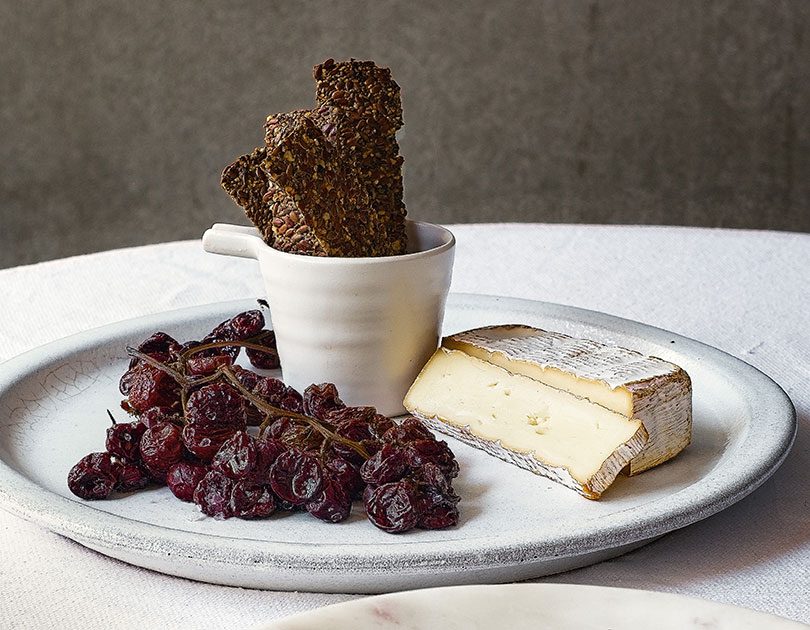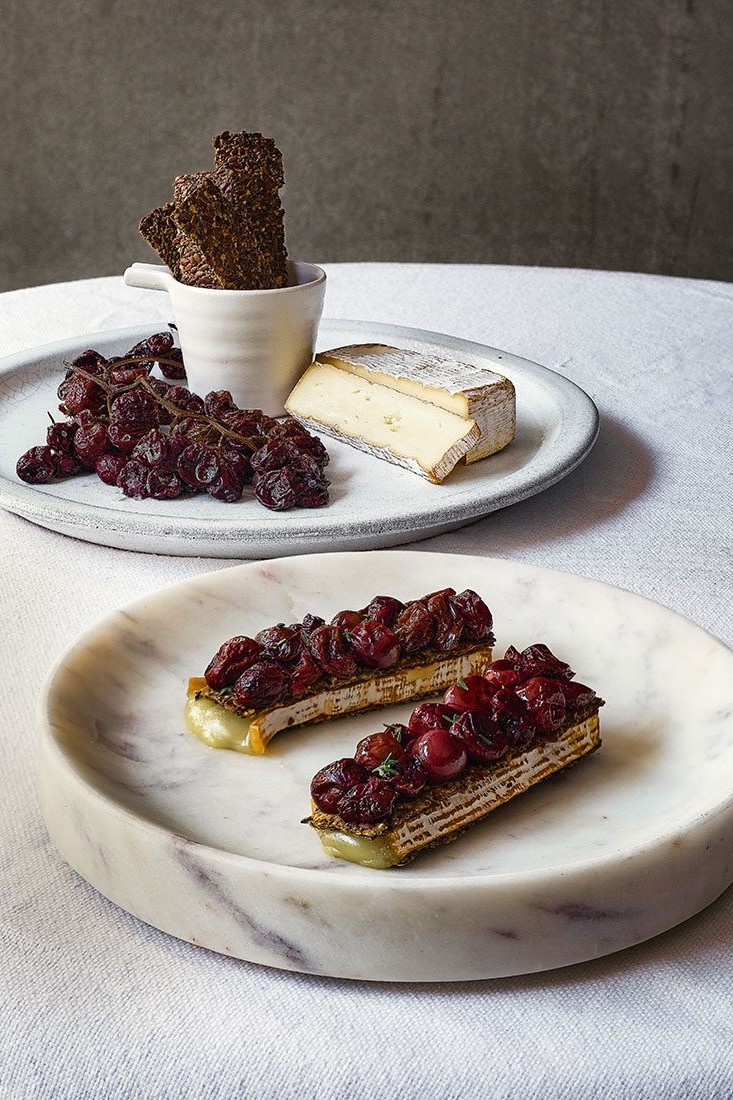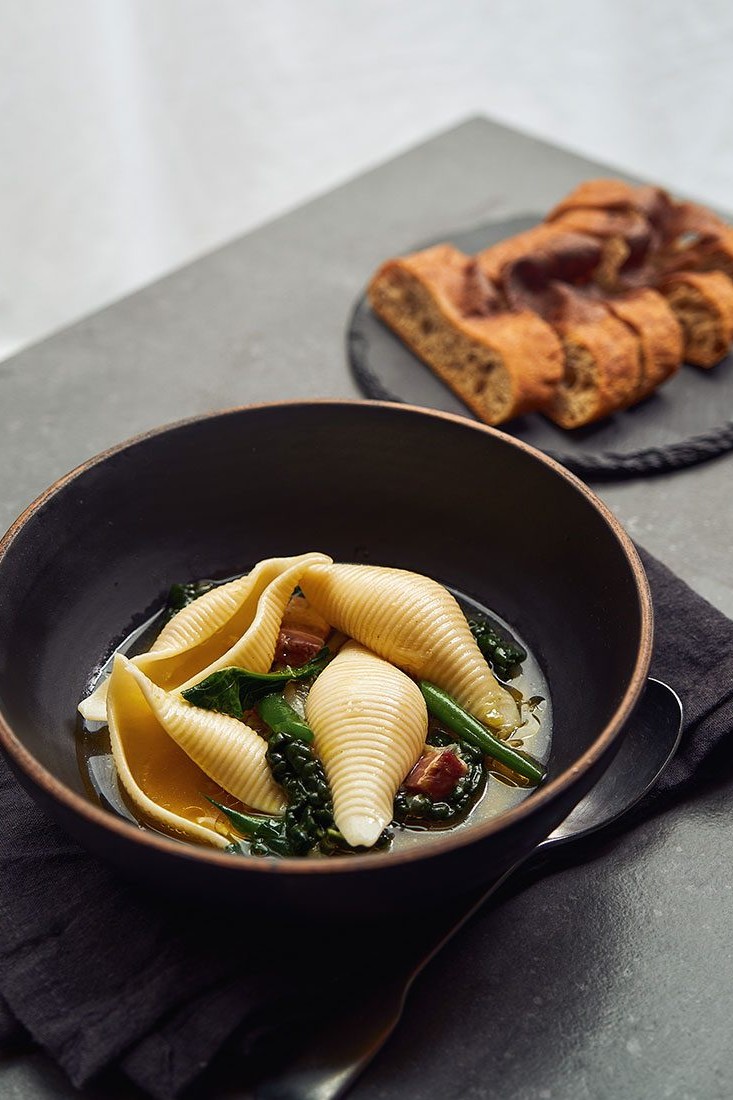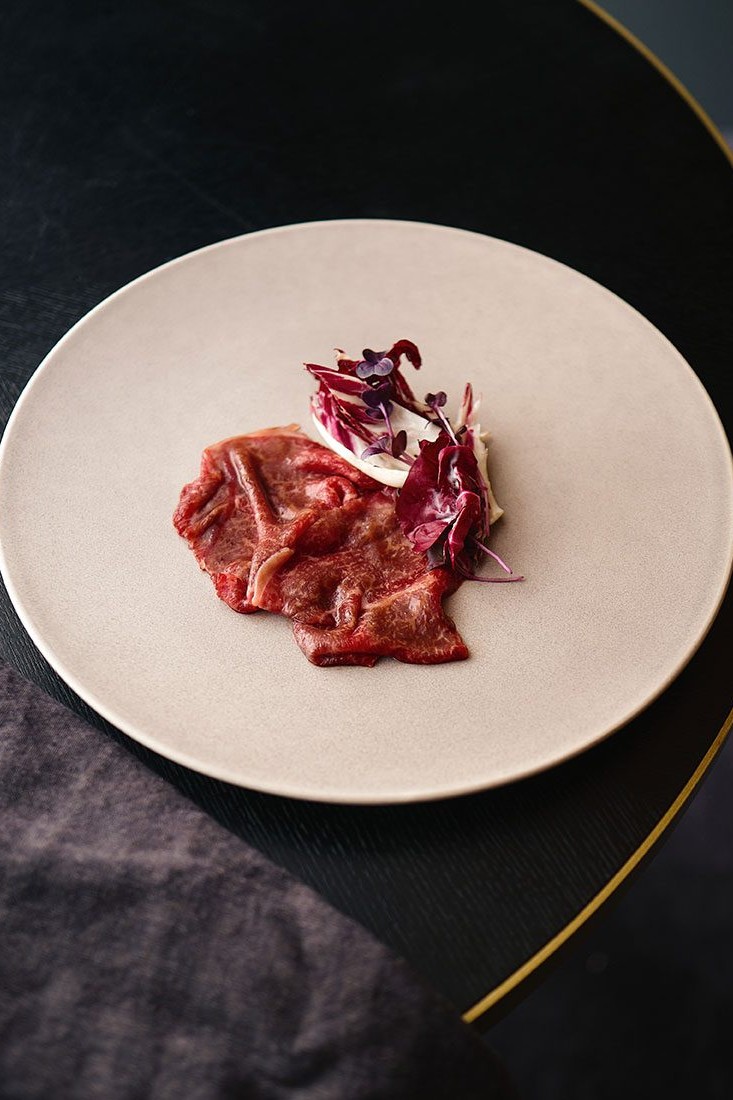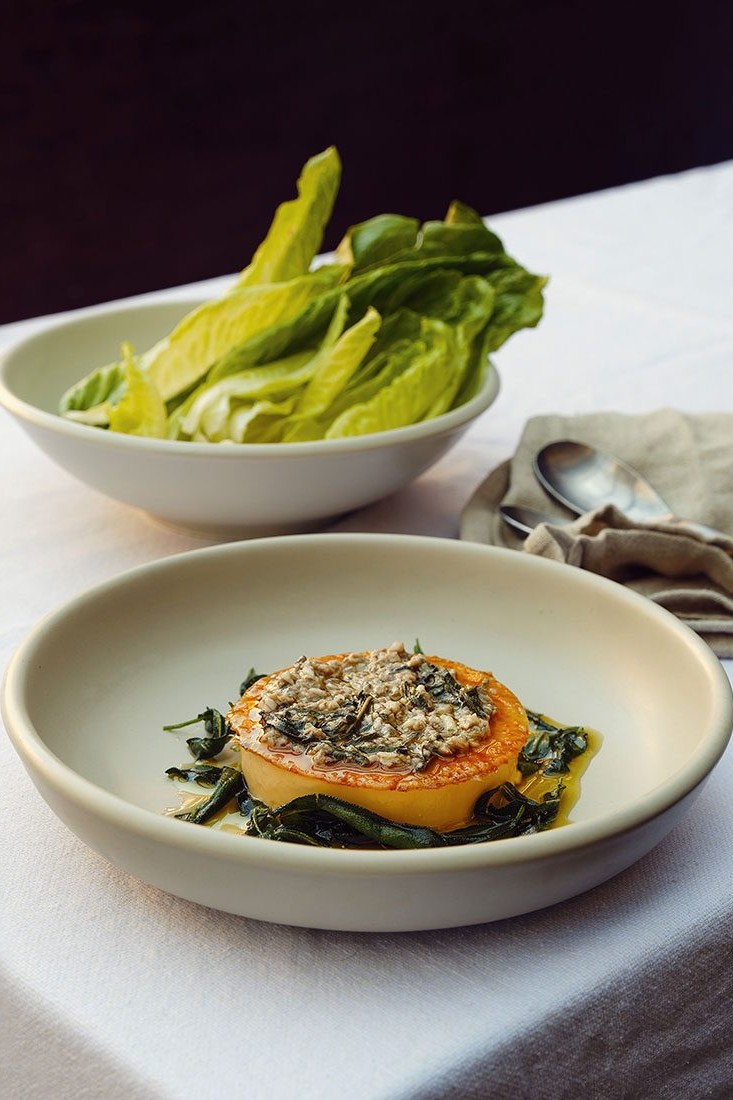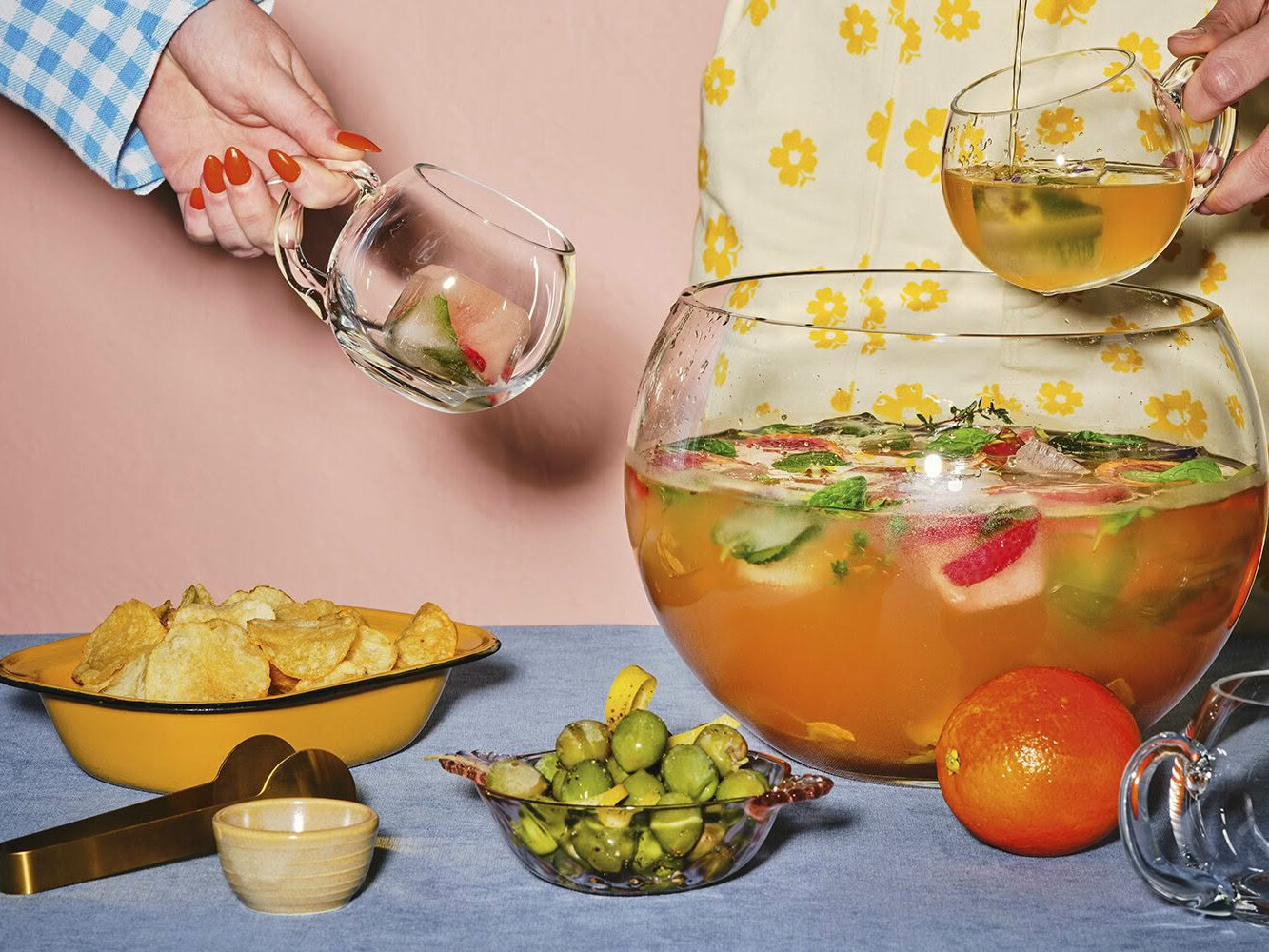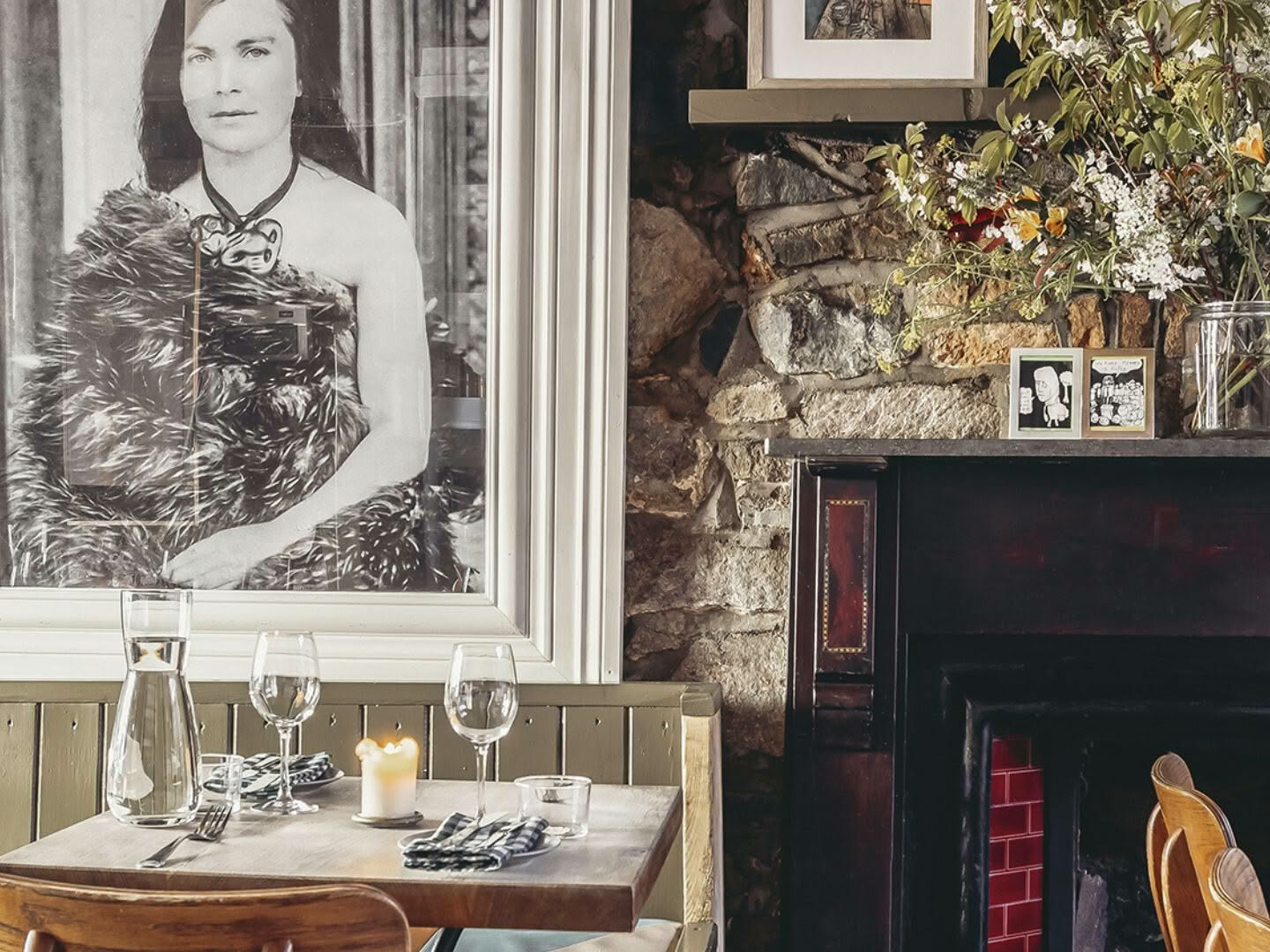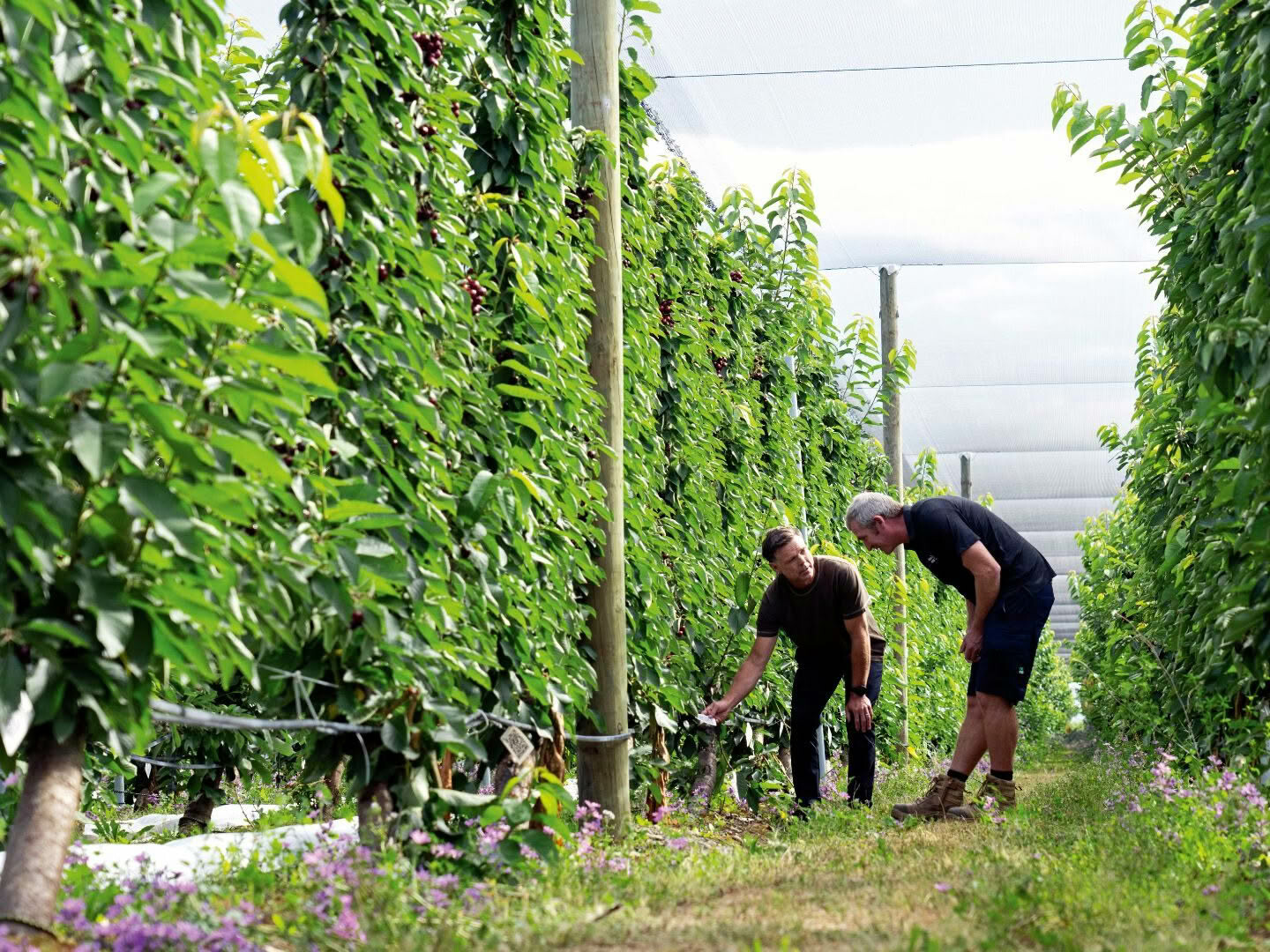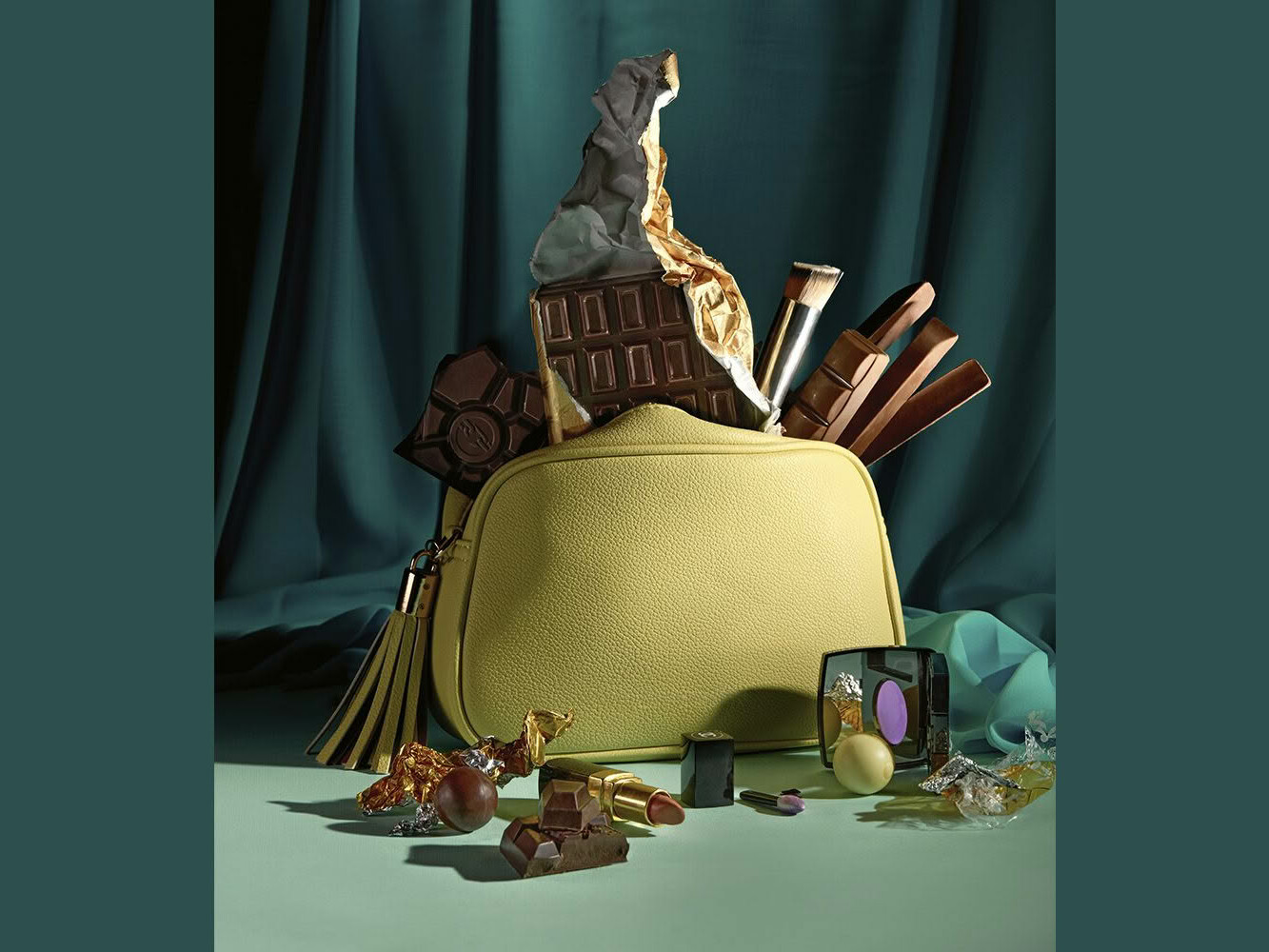Grapes and anchovies, new-style carpaccio and minestrone ideas from David Neville.
THERE’S LOTS OF . . . GRAPES
Grapes are a fun fruit. Wine in capsule form with none of the side effects but, some would say, none of the fun either. Their age on this planet is only matched by their variety. They have long been associated as a symbol of fertility and they herald that summer is coming to an end. Grapes do have one problem though: they are tricky to cook. These recipes should go some distance for all those who have vines that produce more than they can handle.
GIVE THESE A GO…
Fermented grapes with burrata cheese
Place 500g of picked grapes into a sanitised Kilner jar. Mix 10g of natural, non-iodised salt with 500ml of cold water and pour over grapes. Tap to remove air bubbles. Place a fermenting weight on top of grapes to keep them completely submerged. Seal jar and store at room temperature in a dark place. After 2 days, release the top of the jar to allow gas to escape (some fizzing should occur). Repeat the process every 2 days for up to 10 days, then store in the fridge. Cut 2 x 200g balls of burrata cheese into halves. Divide cheese between 4 plates and garnish each plate with 10 fermented grapes. Drizzle with a tablespoon of olive oil, 6-7 tarragon leaves and some black pepper. Serve with firm crackers.
Grape, grappa & liquorice jam (Makes 500g)
Cook’s tip: You can identify a table grape easily as it pops out from its skin when squeezed. Avoid wine grapes, as they won’t slip out of their skins at all. Squeeze 600g of table grapes out of their skins into a medium-sized pot. Reserve skins in a separate bowl. Add 4 tablespoons grappa and place over a medium heat to come to a simmer and cook for 15 minutes. Press the grape pulp through a sieve to remove seeds and return it to the pot. Add the reserved grape skins, 400g jam sugar and two liquorice tea bags. Return to a simmer, while stirring, and cook for approximately 20 minutes at 105°C. Discard tea bags and allow the jam to cool thoroughly. Store in the fridge for up to 10 days. Ideal on toasted spiced bagels with cream cheese.
Duck with grape ketchup & endive
Place 300g seedless grapes into a medium-sized pot with 150ml apple cider vinegar, 250g sugar, a cinnamon quill and two whole cloves. Bring to a simmer, stirring regularly, to form a pulp. Cook for 40 minutes until syrupy. Discard cinnamon and cloves. Blitz in a blender until smooth and set aside. Score the fat on 4 duck breasts and season with salt. Place skin-side down in a medium-hot pan and allow to render for 6 minutes and become light golden. Flip the breasts and continue to cook for 4 minutes over moderate heat. Remove from heat and allow to rest. Cut 2 endive lengthwise and place into the pan with rendered duck fat and cook for 3-4 minutes. Turn endive, splash with red wine to deglaze and swirl for 1-2 minutes. Finely slice the duck and serve with endive and 2 tablespoons of grape ketchup. Ideal as a lunch or a dinner main with a starchy vegetable.
When one thinks of Italian classics it’s easy to conjure thoughts of pasta with rich ragu or blistered pizza. It is easy for these superstars to overshadow one of the oldest Italian classics. Minestrone is a fairly loose description for a vegetable- centric soup, often with grain. There is no time-honoured recipe, just the technique of simple one-pot cooking.
REINVENTING THE MEAL / MINESTRONE
GIVE THESE A GO…
Milanese minestrone with tomato, red pepper, radicchio, sausage & sundried tomato pesto
Quarter 2 large red peppers, remove seeds and dice into 2cm pieces. Finely slice 2 medium-sized red onions and 4 cloves garlic. Heat 100ml neutral oil in a pot and sweat vegetables for 4-5 minutes. Add 4 coarsely cut pork sausages and cook 3-4 minutes. Add 400g finely shredded red cabbage and continue to cook for 3-4 minutes. Add 2 x 400g cans whole peeled tomatoes, 500ml stock and 1 cup arborio rice. Bring to a simmer for 25 minutes until rice is tender. Remove from heat and stir through 200g coarsely cut radicchio leaves. Divide between 4 bowls and garnish each with a tablespoon of sundried tomato pesto.
Pacific beef minestrone with borlotti beans, baby onion, taro, kombu & bonito
Rinse 400g corned beef under cold water for 30 minutes. Place in a slow cooker with 2½ litres cold water and 2 pieces of dried kombu (about 10cm in size each). Cook on high setting under a lid for 2 hours. While beef is cooking, cut 5 small pickling onions in half lengthwise and remove skin and core. Slice 2 large carrots into 1cm-thick rounds. Peel 500g fresh taro and dice into 2cm cubes. Slice 2 celery stalks into 2cm lengths. Drain a 400g can of cooked borlotti beans. After 1 hour of cooking, add vegetables and beans to the beef and continue to cook for another hour. Remove beef and slice into ½cm slices. Discard kombu. Divide soup into four bowls and arrange sliced beef in the centre of each. Sprinkle with a tablespoon of shaved dried bonito.
Mushroom minestrone with bacon, cannellini beans & parmesan
Soak 200g dried mixed forest mushrooms for 20 minutes in 1 litre warm water, until doubled in size. Strain and reserve liquid. While mushrooms soak, finely slice 2 medium onions, 200g rasher bacon, 4 cloves garlic and 200g of the white part of a leek. Quarter 600g Swiss brown mushrooms and drain a 400g can cannellini beans. Heat 100ml of neutral oil and add onions and cook for 10 minutes until beginning to colour. Add bacon and garlic and continue to cook for 10 minutes until bacon is fully rendered. Add sliced leek and Swiss brown mushrooms and cook 2-3 minutes. Add soaked mushrooms, the strained soaking liquid and the beans. Bring to a simmer for 4-5 minutes and remove from heat. Add ½ cup grated parmesan and stir through. Season with salt and pepper to taste. Divide between 4 bowls and top with additional grated parmesan. Ideal with crusty bread.
Beef carpaccio is a well-documented dish of raw beef named after the Italian painter and his use of reds and whites. In the modern vernacular, a carpaccio can be anything that is thinly sliced and served raw. Much like its cousins crudo, tartare and sashimi, they are dishes that embrace our more primal origins. When making any raw dish its freshness is paramount. One also needs bravado, because you’re pulling one of the chef’s greatest tricks, by not cooking at all.
MAKE IT YOURSELF / CARPACCIO
GIVE THESE A GO…
Venison carpaccio with coffee, hazelnut and rocket
Sear 300g venison tenderloin for 20-30 seconds and allow to cool. Heat 3 tablespoons sherry vinegar, 1 tablespoon honey and ½ tablespoon ground coffee in a small pot until steaming and almost boiling. Remove from the heat and strain. Whisk in 6 tablespoons olive oil and reserve. Toast 100g skinless hazelnuts in a moderate oven for 5-6 minutes until golden then coarsely chop. Thinly slice venison and divide between 4 plates. Season with salt and cracked pepper. Spoon over the coffee dressing and sprinkle with chopped hazelnut. Garnish each plate with 4-5 rocket leaves.
Zucchini carpaccio, yuzu, curry spice & quark
Allow 300g of quark cheese to come to room temperature. Remove the tops and bottoms from 600g zucchini and shave on a mandolin into slices 2mm thick. Place zucchini into a large bowl, season with 2 teaspoons flaky sea salt and allow to stand for 3-4 minutes until beads of moisture appear. Add 20 coarsely ripped basil leaves, drizzle over 75ml Lot 8 yuzu olive oil and toss thoroughly. Divide the quark between 4 plates and spread out with the back of a spoon. Take small handfuls of the shaved zucchini and pile it evenly over the cheese. Lightly sprinkle each plate with ¼ teaspoon fresh, vibrant curry powder. Serve immediately.
Salmon, kawa kawa, ponzu vinaigrette & mayonnaise
Place 250g salmon fillet into a bowl and season with ½ tablespoon flaky salt, 1½ tablespoons sugar and ¼ tablespoon of dried kawa kawa leaves. Put in fridge for 1 hour. Remove from fridge, rinse off seasonings and pat dry. Slice salmon into 4 pieces and bat out between layers of plastic wrap. Arrange on 4 plates, brushing each piece liberally with mayonnaise. Whisk 50ml ponzu with 100ml olive oil and drizzle over. Garnish with a sprinkling of dried kawa kawa leaves.
Whitefish carpaccio, lemon, sage & burnt sugar dressing
Place ¼ cup sugar into a small pot and dampen with water. Cook over medium heat until a light caramel colour, then remove from heat to cool. Place 400g of fresh white fish into a bowl, sprinkle over ½ tablespoon of flaky salt and 1 tablespoon sugar and rub in. Put into the fridge for an hour. Remove fish and rinse off salt and sugar and pat dry. Cut into 8 pieces and gently flatten between pieces of plastic wrap. Evenly divide the fish between 4 plates. Mix 80ml sherry vinegar, 80ml olive oil, salt and pepper with the cooled caramel. Add more vinegar if it is too sweet. Squeeze ¼ lemon over each plate, drizzle with dressing and garnish with 2-3 finely sliced sage leaves per plate.
This classic Italian flan is a savoury, unctuous delight. The recipe highlights the difference between the fragile, salty brown anchovy and the acidic, meaty white anchovy. Once you you have tried them in their different applications, it will make you a convert to this polarizing little fish.
CELEBRATING THE STAPLES / ANCHOVIES
When anchovies appeared in the new world they hired a bad PR team. If you don’t like anchovies it’s likely that someone penny pinched and served you the wrong kind. Let us sort this one for good: brown anchovies are melted into food for salt and flavour – you shouldn’t be able to see them; white anchovies are meant for salad and pizza etc and used for acidity – they don’t dissolve. The difference between the two is like chalk and cheese.
GIVE THESE A GO…
Bagna cauda: anchovy & garlic dip
Place 300g peeled garlic into a pot with 400ml milk and bring to a simmer for 20 minutes. Remove from heat, strain off the milk and discard. Return the garlic to the pan, add 150g skinless walnut pieces and cover with 250ml fresh milk and 250ml cream. Return to heat and simmer for 15 minutes. Strain off liquid and reserve. Add 10 brown anchovies and 1 tablespoon butter to the cooked garlic and walnut and blend. Gradually add some of the reserved liquid to form a smooth paste. Season with pepper to taste. Serve with bread, fresh vegetable sticks and potato chips.
Anchovy aioli
Place 3 large egg yolks into a medium-sized bowl. Add 1 teaspoon mustard and 1 tablespoon each white vinegar and anchovy sauce and whisk until creamy. Slowly drizzle in 350ml light olive oil, whisking continuously. Season with pepper and extra anchovy sauce to taste and thin with a little warm water if desired. Ideal in sandwiches and crunchy lettuce leaf salads.
Spaghetti puttanesca
Heat a large pan and sweat 1 large finely diced onion and 3 sliced garlic cloves for 3-4 minutes. Add ½ teaspoon chilli flakes and 5-6 brown anchovy fillets. Cook for 2-3 minutes for the anchovy to dissolve. Add a 400g can whole peeled tomatoes and simmer for 15 minutes. Remove from the heat and add 2 tablespoons drained capers and ½ cup pitted black olives, stirring through the sauce to warm through. Boil 200g dried spaghetti until al dente and drain. Fold pasta through sauce and divide between bowls. Garnish with fresh oregano and shaved pecorino cheese.
Anchovy toast with caramelised onion
Peel and finely slice 4 white onions. Heat oil in a heavy-based pot and sweat onions for 15-20 minutes. Add 2 tablespoons brown sugar and 2 tablespoons sherry vinegar. Continue to cook over low heat for 25-30 minutes until caramel coloured and syrupy. Season with salt and pepper. Toast 8 slices ciabatta bread and drizzle with olive oil. Spread the caramelised onion on each slice and top with 3-4 white anchovy fillets per slice. Place under a hot grill until hot and serve immediately.

